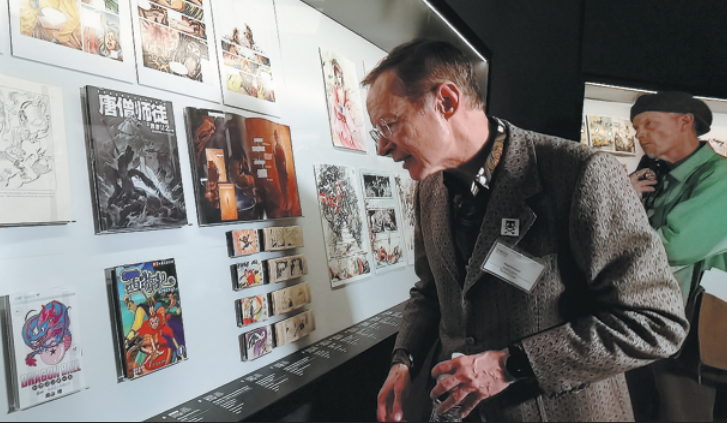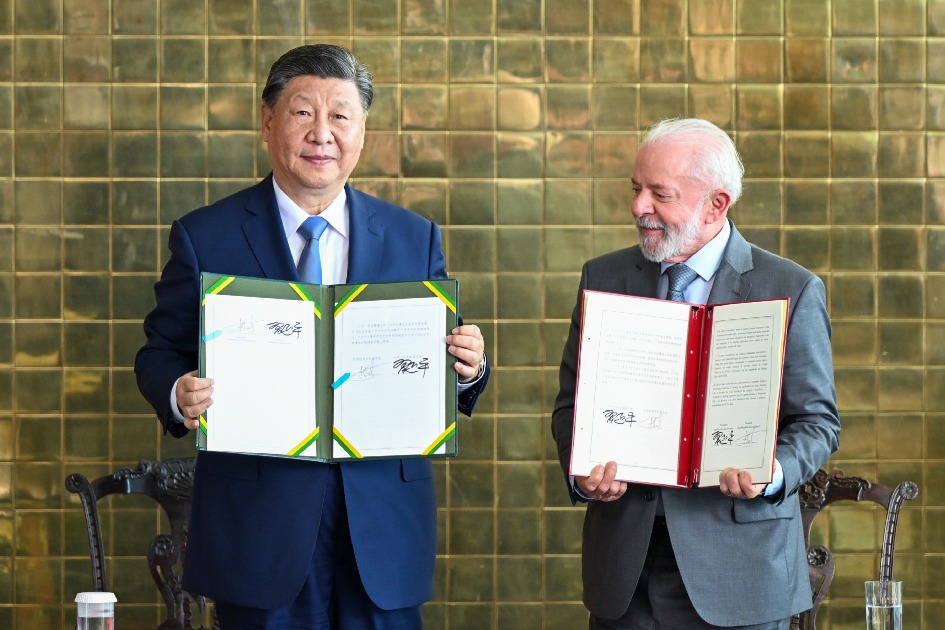Asian comic strips throw light on past
400 works from 20 nations and regions offer insight into continent's rich tradition
By RENA LI in Los Angeles | China Daily Global | Updated: 2024-03-19 09:29

When famous Chinese stories such as Journey to the West, Wanderings of Sanmao and Mr Wang were displayed as vibrant comic strips this month at a California museum, they not only brought novelty to the local audience but also served as gateways to Asian culture and history.
As a global touring exhibition curated by the British Barbican Centre, Asian Comics: Evolution of an Art Form made its North American debut on March 9. It will be on display until Sept 8 at the Bowers Museum in Santa Ana, which has displayed fine arts and cultural themes for 80 years.
"This Asian comic exhibition is an artistic journey through time and imagination," Anne Shih, chairwoman of Bowers Museum, said. "From traditional hand-drawn creations to the most advanced digital interpretations, it brings audiences to explore the origin and development of Asian comics."
Shih said the exhibition has collected more than 400 pieces of comic art from 20 countries and regions in Asia, 80 of which are from the Chinese mainland, Hong Kong and Taiwan.
Spanning more than 200 years (1814-2023), the Asian exhibits highlight an array of original comics, publications, illustrations, animation films and multimedia productions.
Paul Gravett, a guest curator from the British Barbican Centre who has worked on comics publishing and promotion since 1981, said the exhibition is a vivid journey through the art of comics and visual storytelling across Asia.
From its historical roots to the most recent digital innovations, the exhibition looks to popular Japanese manga and beyond, highlighting key creators, characters and publications.
"I'm very excited to bring the Asian Comics exhibition to the Bowers Museum," Gravett said. "The diverse communities of Southern California are the ideal audience for this multicultural exhibition. The vibrant comics of Asia can bridge East and West and invite us to discover the realities and dreams of their creators and readers."
Jiao Tianlong, chief curator and director of the museum's Asian exhibitions, said this inaugural display features a special focus on traditional Chinese art and its captivating influence on the global comics stage.
Encompassing folklore, historical events, self-expression and modern adaptations, the exhibition's content is rich with varied themes. Among them is the famous Chinese comic Monkey King — a 20-volume series based on the legendary novel Journey to the West — which took 70 people more than six years to complete.
The novel encompasses various genres — comedy, drama, satire, a meditation on faith and discipline, and a fantastical dramatization of China's history — all woven into one remarkable narrative.
"There are various interpretations of the Monkey King. Since the novel has been translated into different languages such as English and Japanese, it is not only popular in China but also in the Western world," Jiao said.
Jiao mentioned another comic show titled Mr Wang, featuring works by Ye Qianyu (1907-95), a legendary figure in Chinese comics.
"This classic Mr Wang series drawn by Ye in a satirical way was published in Times Comics in Shanghai for many issues in the 1930s. It reflected some social problems in Shanghai at that time. It is a very classic work in the history of Chinese comics," Jiao said.
As one of the most popular Chinese comics in the 1930s and 1940s, the comic strip starring two middle- and lower-class Chinese men Mr Wang and his sidekick Xiao Chen later inspired a successful movie franchise.
If Mr Wang is the epitome of Chinese comics in the old era, contemporary Chinese comics have absorbed many international animation elements. From The Return of the Great Sage to Big Fish & Begonia and The Wind Guardians, Chinese-style animation is becoming increasingly popular, driven by the persistence and inheritance of traditional Chinese culture by cartoonists.
Among them is a creative female cartoonist, Zao Dao.
In the past two years, Zao Dao has contracted poster designs for many well-known films, TV series and animations. One of her creations, Du Gu: The Breath of the Wind Through the Pines, 2015, has been collected for the Asian Comics exhibition.
Making a mark
"Zao Dao's creative journey has left an incredible mark on the world of visual storytelling," Jiao said. "We are planning to invite her to come from China to our museum to share her artistic exploration."
Dressed as Miku, an iconic vocaloid character featured in Asian comics, Katie Lowe, a 20-year-old from Newport Beach, California, strolled through the museum wearing a short black jumper.
Pausing in front of Zao Dao's comics, she expressed her admiration for the artist's creations.
"I love these creative pieces; they're amazing," she said. "And I am also very interested in the magical figures in Journey to the West."
Patrick Moran, acting co-head of the Barbican Immersive program, has expressed his fondness for another iconic Chinese comic character, Sanmao, featured in the exhibition.
Designed by Zhang Leping (1910-92) in 1935 as a daily comic strip, Sanmao's story reflected social changes in China 80 years ago.
"I believe Sanmao is a popular character for Chinese audiences," Moran said. "His misadventure as an army recruit is sort of a comedy, but the story is very sympathetic.
"I hope American audiences who don't read or speak Chinese will see these comics and become curious about Chinese history and become fans of Chinese culture."
Sean O'Harrow, president and CEO of the museum, emphasized the vital role of comics in preserving culture, history and character stories.
"This exhibition features artists from across Asia, including China, who were critical of politics, such as commenting on the Japanese occupation of China. They revealed the historical events that unfolded throughout the 20th century."
























